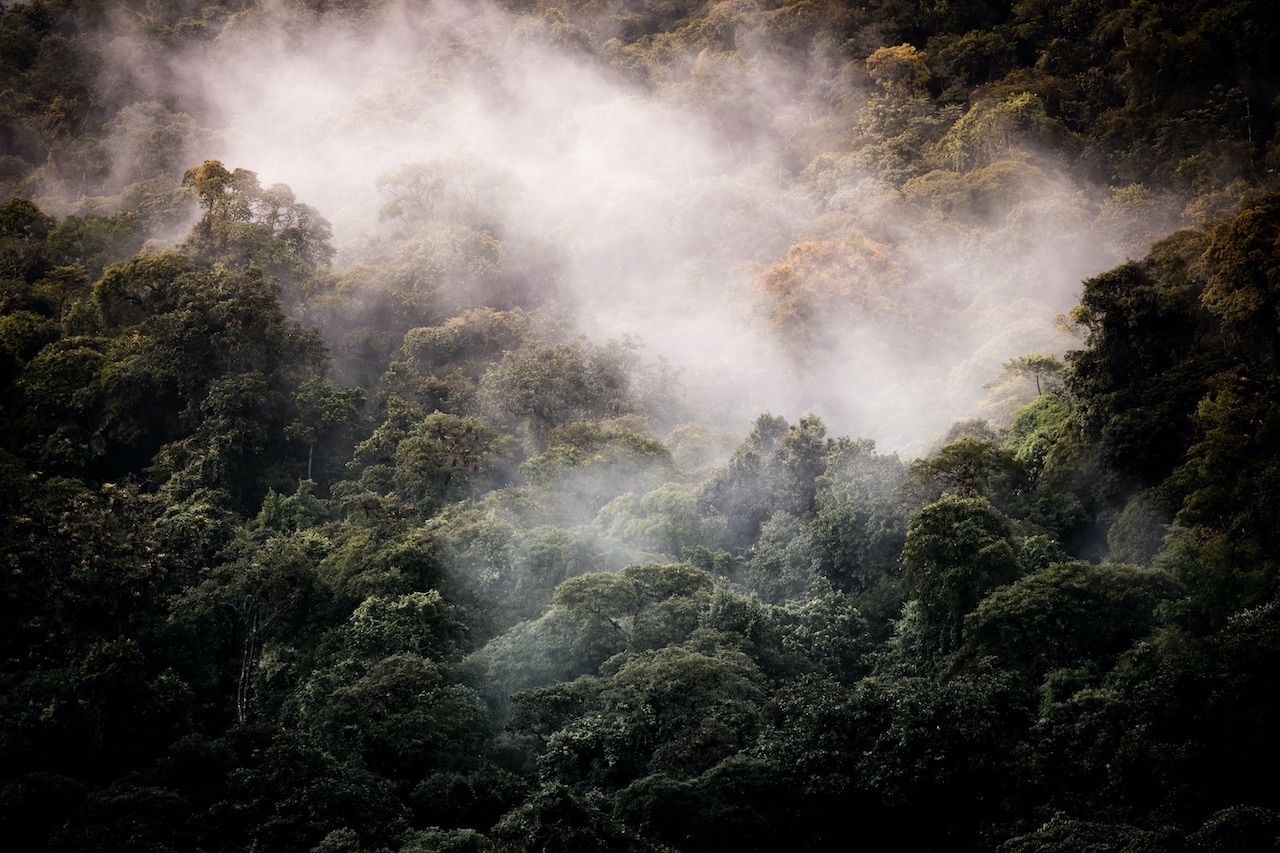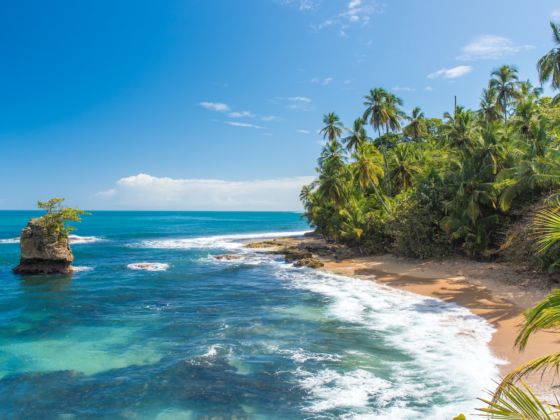Costa Rica isn’t hurting for visitors, and with all those fellow travelers on the road, you might expect it to be difficult to get off the beaten path. But consider this: Costa Rica is home to a full 6% of the world’s biodiversity, and counting, as scientists believe there are still thousands of endemic species yet to be discovered. If you can’t find hidden, undiscovered spots here, you’re doing something wrong.
Many of Costa Rica’s dreamiest, most remote destinations are at the far tips of the country, protected by national parks or seemingly barricaded as a result of daunting dirt roads. But the fact that they take time and effort to reach is exactly what makes them worth the trip. Put these five places on your itinerary, and you’ll be rewarded with an amazing cache of quiet wonders.
1. Isla Cabo Blanco / Cabuya
First on your list: Isla Cabo Blanco. Just offshore of the southern tip of the Nicoya Península, this “isla” is essentially a massive white rock that pokes out of the Pacific Ocean. Although the jagged islet has basically zero vegetation, it’s home to the country’s largest population of brown booby seabirds (and gets its name from the guano that speckles the outcropping). You can hire local fishermen to ferry you from the mainland to this ultra-remote island to snorkel, fish, or watch for whales.
Cabo Blanco Nature Reserve protects the island along with a small chunk of mainland coast, which, in contrast, has all the vegetation — and all the animals. It’s home to magpie jays, blue morpho butterflies, sulfur-winged parakeets, armadillos, coatis (pizotes), and several species of wild cats. Those are a few you might miss, but you definitely won’t miss the howler monkeys swinging through the jungle canopy, shrieking so loudly you can hear them from miles away.
Unlike Manuel Antonio National Park farther south along the Pacific Coast, which sees loads of visitors year-round, this nature preserve is quiet and mellow. You can stay in the tiny town of Cabuya or head over to nearby Malpais. The latter is a laid-back surf town so beloved by Ticos that it has a popular brand named after it. You’ll have to take a bus back to Cabuya to access the park, but the road is scenic and the solitude is worth it.
2. San Gerardo de Dota

Photo: Shutterstock/Jeroen Mikkers
Less than three hours south of the capital, this rural village in the Talamanca mountains is virtually devoid of tourists and tourist infrastructure, save for a few ecolodges and sodas (small restaurants). But San Gerardo de Dota is one of the few places in Costa Rica where you can spot the rare resplendent quetzal — for perspective, another of its habitats is Monteverde Cloud Forest Reserve, which sees an estimated 250,000 tourists annually. Though its reputation has been growing among birdwatchers in recent years, San Gerardo de Dota remains off the map for most international visitors.
In addition to the remarkable avifauna (200 bird species beyond the quetzal!), the surrounding Los Santos Forest Reserve has a smorgasbord of verdant, mist-covered hiking trails. Towering at 12,000 feet above sea level, the mountains layer ecosystems like pancakes, with giant stands of oak above and tropical jungles below. You might catch peccaries dashing about the lowlands, and the nearby Río Savegre provides stellar trout fishing.
3. Punta Manzanillo
The Caribbean side of Costa Rica is different from anywhere else in the country. Here, you won’t find gallo pinto (a traditional Costa Rican breakfast) on the table — this region is known instead for its spectacular Afro-Caribbean flair. The food is spicier, the music is louder, and the water is warmer.
Start out by heading as far south as the road can take you. At the very bottom of the country’s Caribbean coastline, you’ll find a quiet beach located inside the Gandoca-Manzanillo Wildlife Refuge. This is Punta Manzanillo, and it will stop your heart for a quick second. The water glows sapphire, and the sand is lined with almond trees. There are sloths, monkeys, toucans, and tropical fish. Inside the reserve, palm swamps protect endangered tapirs and hordes of other wildlife. A more exotic version of Eden, really.
When you’re done exploring the refuge, sit in one of the little sodas and dig into some yuca frita (fried yuca root), or try the rondón soup, a local staple.
4. Ostional National Wildlife Reserve

Photo: Shutterstock/Irina K
Adjacent to the striking-in-its-own-right Las Baulas National Marine Park, you’ll find Ostional Wildlife Reserve. It’s here that the arribada (“arrival”) occurs every year, a phenomenon that sees hundreds of female olive ridley sea turtles pulling up onto the coast over the course of several months. They come in pods, typically appearing a few days before the new moon when night is darkest. Hundreds congregate offshore for several days, building up their numbers. And then, all at once, and as if by some secret language, they begin coming ashore to lay their eggs. The first swarm always arrives at night — hundreds at a time — and then the others proceed in steady streams over the next few days.
Although there are indeed tours that go through here, it’s not a place that’s saturated with tourists, likely because the spectacle takes place under cover of darkness. You can catch an arribada any time between July and December; however, peak season is August to November.
Note: The turtle’s nesting environment is preciously fragile, so it’s essential that you go with a knowledgeable tour guide. Not only will you be in trouble for sneaking in, you run the risk of stepping on eggs or damaging the delicate ecosystem. Be smart, and be respectful.
5. Playa Matapalo
Located at the southern tip of the rugged Osa Península, Playa Matapalo is a breezy, low-key surf beach at the end of the road. It’s a six-to-seven-hour drive from San José, which keeps the beach-going crowds away (most flock to Tamarindo or Jacó instead).
There’s hardly anything to do in Matapalo, which is exactly what makes it so special. There’s no need to book tours here or join group activities — this is a spot that feels far from the rest of the world. A place you visit to read a book on the beach or watch the tide come in…and then watch the tide go out. It’s near Corcovado National Park but not inside it, which means you can also enjoy the area’s splendor without having to get a park pass. If you want to take a day trip inside, you’re only half an hour from the park office.
Sometimes, the best spots in Costa Rica are hidden in plain sight.

